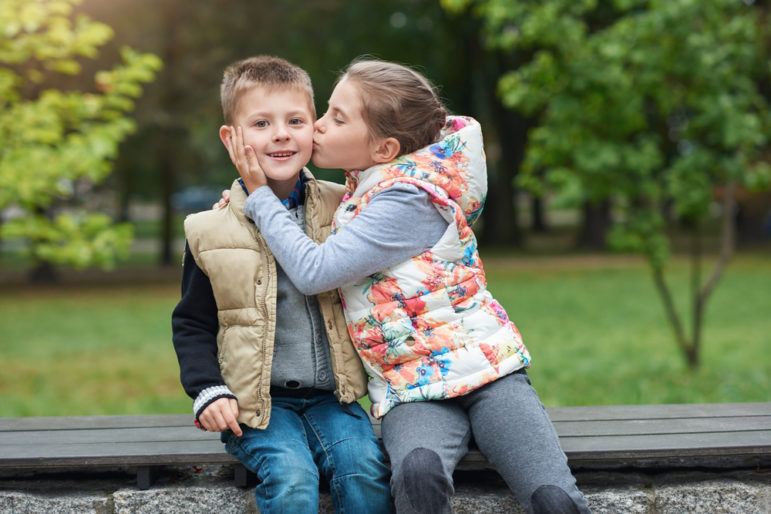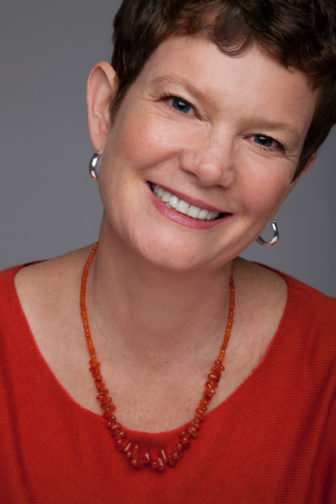
mavo/Shutterstock
When it comes to child development we have tons of information about how kids’ social, emotional, physical, spiritual and intellectual abilities grow and change over time. However, there is one aspect of child development that is nearly always overlooked — sexuality.
We are sexual from birth, and our sexuality develops and changes over time just like all the other parts of being human. Due to lack of information and education among folks who work with kids, developmentally typical behaviors are often mistaken for signs of sexual abuse. In this increasingly sexualized world it’s time to add childhood sexuality to the list and understand what’s typical, what’s not and when to get a child help.
Sexuality is a part of every human regardless of age, and while we are fully aware of the physical changes associated with sexual development, social and emotional development occurs as well. Typical and common behaviors, “sex play,” should be spontaneous, mutual and good-humored and are considered a healthy part of psychological, social and sexual development.
 When puberty makes the scene children’s sexual behaviors and experimentation intensify and become more adultlike in nature. Once they are in adolescence kids generally engage in even more behaviors we would consider to be adult sexuality — making out, touching each other for pleasure, sex, exploring sexual orientations and gender, etc.
When puberty makes the scene children’s sexual behaviors and experimentation intensify and become more adultlike in nature. Once they are in adolescence kids generally engage in even more behaviors we would consider to be adult sexuality — making out, touching each other for pleasure, sex, exploring sexual orientations and gender, etc.
From birth until puberty children perceive healthy sexual behaviors as games; these behaviors are called “sex play.” When kids are involved in sex play it is usually spontaneous, mutual, good-humored. They are good friends with a close play relationship — besties, siblings or cousins who are similar in age and development.
Most sexual behaviors involve the following elements: curiosity about bodies, touching another’s privates, games like playing doctor or spin the bottle, gender identification, self-pleasure and/or masturbation. Behaviors that are cause for concern include: imitating adults sexually, sex play using force, threats, dominance, violence, aggression and/or compulsiveness. Any behaviors that are clearly adultlike (sexualized) or cause high adult concern should be thoroughly investigated.
Our first instinct is to think that a child has been sexually abused when they exhibit sexualized behavior. It’s important to assess the entire situation before deciding that sexual abuse has occurred. Often the child has been exposed to pornography or engaged in this sort of play with another child and they are acting it out.
COMMON BEHAVIORS
When you know what to expect in terms of sexual behavior in children it is much easier to determine if a child needs help. It is very important that you stop the play, casually chat with the kids about their behavior to determine whether further help is needed and remind them of the body-boundary rules.
These common behaviors by age group are adapted from “Preventing Sexual Abuse” by S.K. Wurtele and C.L. Miller-Perrin.
Preschool age (0 to 5):
Common: Sexual language relating to differences in body parts, bathroom talk, pregnancy and birth. Self-pleasure at home and in public. Showing and looking at private body parts.
Uncommon: Discussion of specific sexual acts or explicit sexual language. Adultlike sexual contact with other children.
School-age (6 to 12): This group may include both prepubescent children and children who have already entered puberty, which is when hormonal changes are likely to trigger an increase in sexual awareness and interest.
Prepubescent children (6 to 12):
Common: Questions about relationships and sexual behavior, menstruation and pregnancy. Experimentation with same-age children, often during games, kissing, touching, exhibitionism and role-playing. Masturbation in private.
Uncommon: Adultlike sexual interactions, discussing specific sexual acts, masturbating in public.
After puberty begins (9 to 12):
Common: Increased curiosity about sexual materials and information, questions about relationships and sexual behavior, using sexual words and discussing sexual acts, particularly with peers. Increased experimenting including open-mouthed kissing, body-rubbing, fondling. Exploration and curiosity about gender identity and sexual orientation. Masturbating in private.
Uncommon: Repeated adultlike sexual behavior, including oral/genital contact and intercourse; masturbating in public.
Adolescence (13 to 16):
Common: Questions about decision making, social relationships and sexual customs; masturbation in private; experimenting between adolescents of the same age, including open-mouthed kissing, fondling and body rubbing, oral/genital contact. Confirmation and exploration of gender identity and sexual orientation. Voyeuristic behaviors are common in this age group. Intercourse occurs among approximately one-third of children in this age group.
Uncommon: Masturbating in public. Sexual interest directed toward much younger children.
Because adolescents engage in more adultlike sexual behaviors, assessment can be challenging. If the behavior is explicit, repeated and causes adult concern the child needs help.
When we know how to identify healthy sexual behaviors in children it makes it much easier to determine if a child or teen needs help rather than assuming all sexual behaviors are problematic. Incorporating information about social and emotional sexual development is key to supporting the whole child and ensuring they are healthy and safe.
Amy Lang, MA is a childhood sexuality and sexual abuse prevention expert. Her clients include the U.S. Air Force Child Development and Youth and Family services programs, Boys & Girls Clubs and many other youth-serving organizations.





























